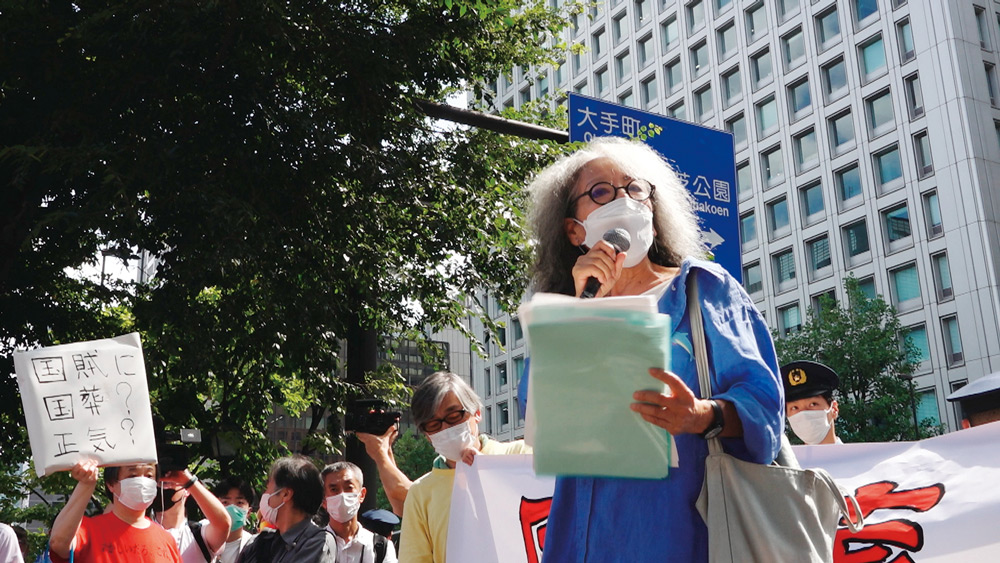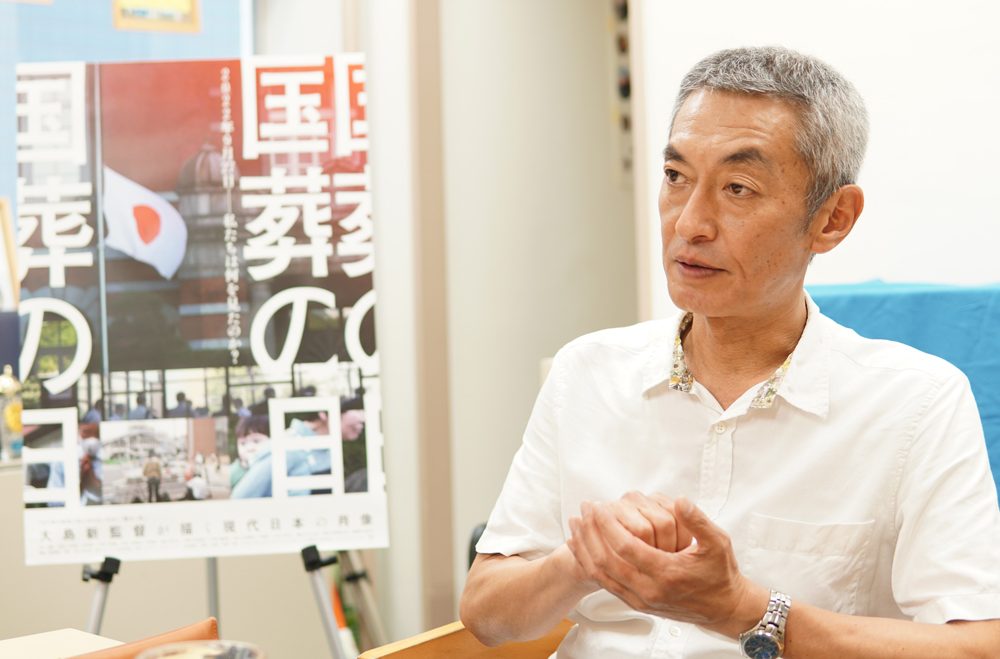!["Kokusô no hi" Director Arata Oshima A unique documentary that depicts the "indifference" of Japanese people like a horror movie [Director's Interview Vol.352]](https://cinemore.jp/images/a560cafa86074120cbf491505e35f1dfe1c66cf3203ecd3ed7268b36a18f7d64.jpg)
"Kokusô no hi" Director Arata Oshima A unique documentary that depicts the "indifference" of Japanese people like a horror movie [Director's Interview Vol.352]
Were the Japanese divided?
Q: Director Oshima says several times in the movie that ``Japan is divided by the state funeral,'' but after watching the whole thing, it seems like Japan wasn't even divided. It was shocking and even scary.
Oshima: I really thought so. The people I used the word ``division'' in my interviews were Keiko Ochiai and Masao Adachi, who clearly held the opinion that they were ``opposed to a state funeral.'' They have their own words and they are also taking action. However, if you look at Japan as a whole, you will see how few people are like that, and conversely, I don't think there are that many people who are clearly in favor of a state funeral. The majority of respondents said, "If anything..." I think that's a certain kind of Japaneseness.

“Kokusô no hi” (C) “Kokusô no hi” Production Committee
Q: That's why the words that Mr. Oshima asks in the film, ``Aren't we divided?'' and ``Can't we do something without dividing?'' seem to be meaningless.
Oshima: I was spinning around in vain (lol). I feel that the current situation in Japan is that there is no visible will to divide the country.
Q: At the end of the movie, the total population of Japan is displayed in the image of the scrambled intersection in Shibuya. That caption made the scrambled intersection look like a wasteland, representing the "indifference of the Japanese people."
Oshima: I really wanted the scramble intersection to be the last scene. What about the majority of the people who used the caption to describe Japan's population? That's what I think. They say a huge number of people lined up to lay flowers, but it was around 20,000. However, there are over 100 million people in Japan. Ordinary people live their daily lives as usual. I chose that place last as a symbol of how different people live their lives in different ways.
Reserve your “Kokusô no hi” now↓

Director: Arata Oshima
Born in Kanagawa Prefecture in 1969. Documentary director and producer. After The Graduate from Waseda University's Faculty of Letters in 1995, joined Fuji Television. He is the director of documentary programs such as ``NONFIX'' and ``The Nonfiction.'' He left Fuji Television in 1999 and worked as a freelancer. He has directed ``Jonetsu Tairiku'' and ``Extracurricular Lesson Welcome Senpai.'' In 2009, he established the video production company Netsugen. His directorial works include ``Theatrical Kara Juro and the Record of the Karagumi Gekidan'' (winner of the 17th Japan Film Critics Award for Best Documentary in 2007) and ``A Creature Called Shion Sono'' (2016). His third film, ``Why Can't You Become Prime Minister?'' (2020), which follows the 17 years of House of Representatives member Junya Ogawa, won first place in the 94th Kinema Junpo Cultural Film Best Ten. In December 2021, he published ``Kagawa 1 Ward,'' which depicts the 49th House of Representatives election, in which Ogawa and Takuya Hirai of the Liberal Democratic Party ran, from the perspectives of both the ruling and opposition parties. His main produced works include ``Make Curry and Rice from Scratch'' (16/directed by Aki Maeda) and ``I'm a Blur, so please take care of me.'' ” (2018/directed by Naoko Nobutomo), “My Story Buraku no Narashi” (22/directed by Yusaki Mitsuwaka), and “Senkyonandesu the Movie” (23/Darth Raider, directed by Petit Kashima).
Interview and text: Tetsuya Inagaki
TV director. My personal goal is to realize a documentary project that depicts the obsessions of manga and movie creators. Programs he has directed in the past include ``The Godfather : The Man Who Revolutionized Manga'' (WOWOW), ``Takeshi's Birth: Master and Asakusa'' (NHK), ``Master and Disciple Story: The Encounter That Changed My Life'' [Masahiro Tanaka x Katsuya Nomura ]” (NHK BS Premium)
"Kokusô no hi"
Pole Pole Higashi Nakano and other locations will be released nationwide from Saturday, September 16th.
Distribution: Dongfeng
(C) “Kokusô no hi” Production Committee

